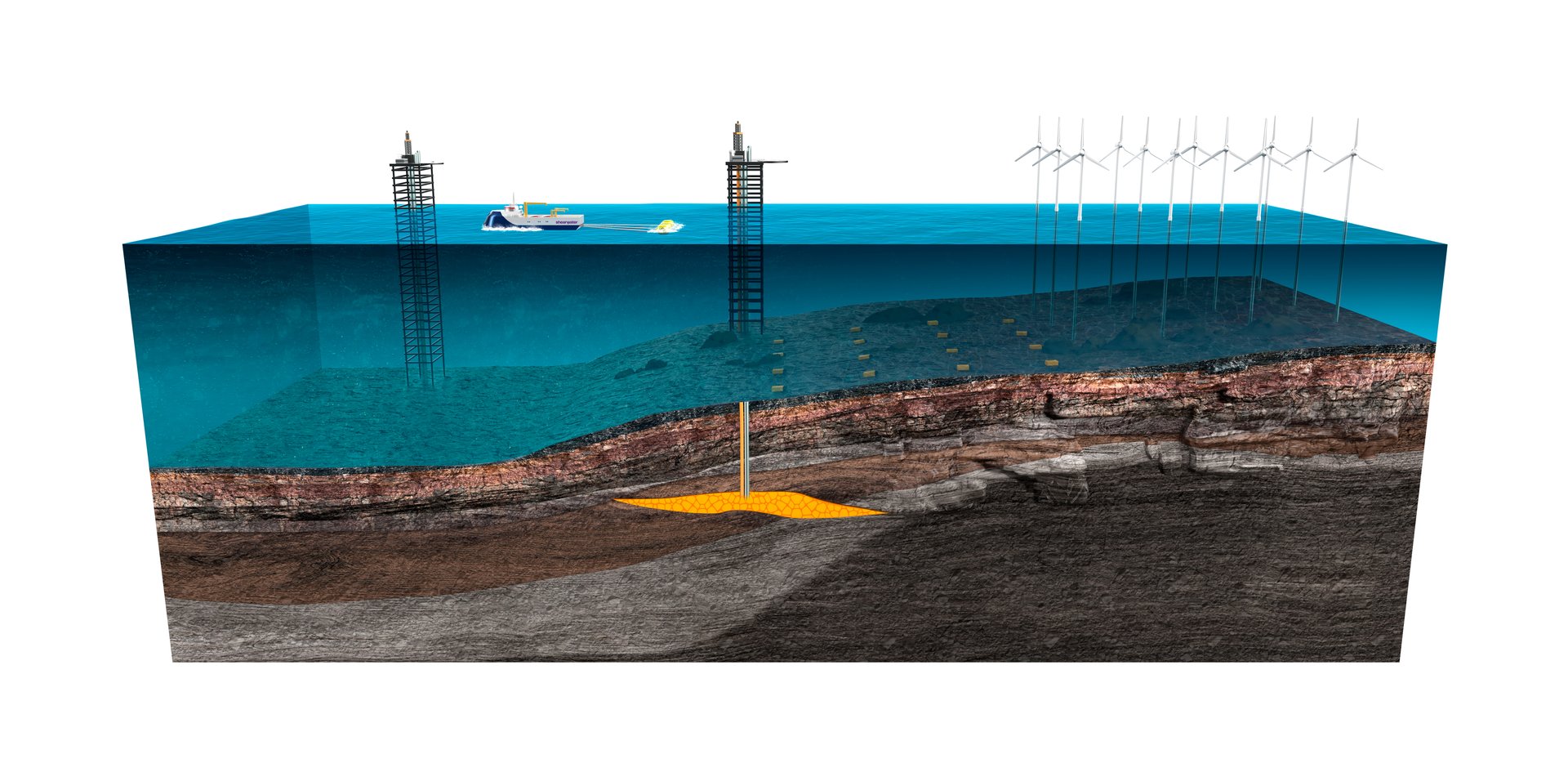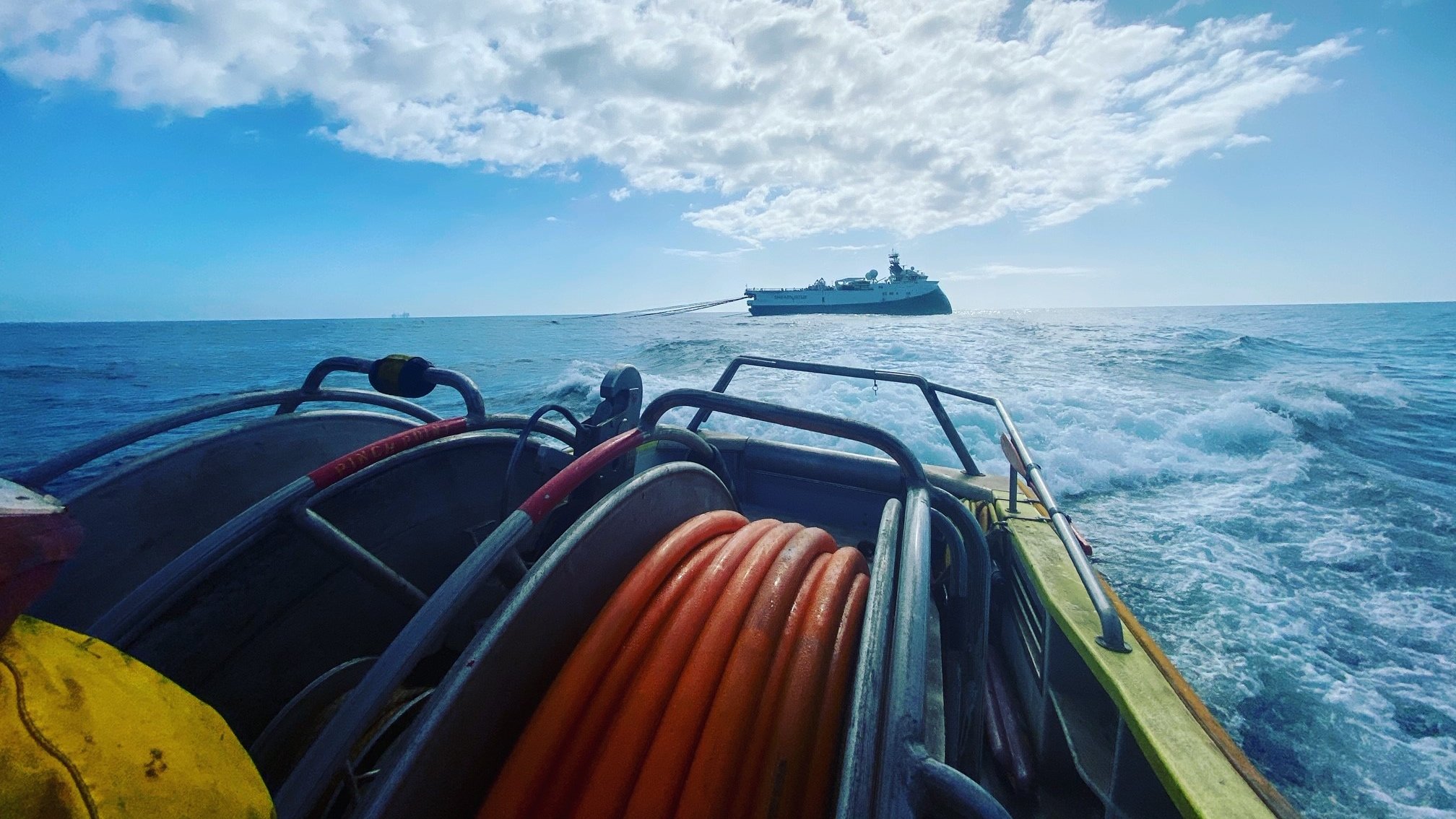Insight article
The bottleneck of CCS – What’s holding the industry back and how can we move forward?
16 Oct 2025
With the Paris 2015 climate goals now 10 years old, the need for urgent climate action has never been so pressing. Several major economies have committed to achieving net zero with the overwhelming consensus that carbon capture and storage (CSS) play a critical role in reducing global emissions.
CCS is not a new concept, but what is new is the scale up required and a very different commercial model. We are seeing first-mover projects developing this different commercial model with strong government support.
However, this is a drop in the ocean compared to the massive task being asked of CCS. Globally, there are hundreds of CCS projects, but they are far from developing and not progressing fast enough.
This article explores the strategic bottleneck holding CCS back—and how a new take on partnerships may be the key to moving forward.
Carbon capture and storage is the strategic enabler for decarbonisation and growth
Climate change is a global problem which calls for an energy transition away from fossil fuels. However, there is a huge global disparity in the energy mix and where nations are on their energy transition journey . CCS can help support developing countries, enabling the decarbonization of coal and natural gas while supporting economic development.
This aligns developing countries with climate goals; energy security to lift populations out of fuel poverty, growing their economies, whilst reducing their emissions that would otherwise continue to grow.
For developed countries, they are much further progressed on their energy transition journey with coal and natural gas playing a reduced role. But CCS has another role here, supporting hard-to-abate industries. Such emissions cannot be reduced through change of technology as the emissions are a direct result of the production of cement, steel, chemicals, and others. CCS aligns continued production with climate goals, maintaining critical supply chain.

With a 50-year track record and proven technology, CCS provides an innovative solution to our climate challenge. The key now is how to scale up to store the quantities required to have a positive impact on our ever-growing global emissions.
What’s holding CCS back?
With clear global ambitions, established technologies and significant storage capacity, which is safe and sustainable, why is CCS not already at the heart of decarbonization?
Emission intervention comes at a cost that involves investment across three key pillars of CCS:
- Capturing and processing of emissions at the source requires specialised equipment and energy.
- Transportation of CO₂ needs repurposed or new pipelines and shipping infrastructure.
- Storage of CO₂ demands site preparation, injection systems and subsequent monitoring to ensure integrity, safety and compliance.
As such, CCS projects are far from simple, requiring an integrated value chain joining up many different parts that are unfamiliar with each other.
The cost and complexity cannot be met solely by companies emitting CO₂. Without broader support, these costs will ultimately be passed down to the consumer – individuals, families and businesses.
To make CCS viable on a scale, we need collaborative funding models, policy incentives, and public-private partnerships that reflect the shared benefits and responsibilities of climate action.
Government support is therefore crucial for this nascent industry. But how?
Policy. There must be a cost associated with emitting CO₂ and a tax regime to incentivise CCS. Several nations have mechanisms in place, such as the Emissions Trading System in the UK and EU, but the cost to emit is still far cheaper than doing CCS.
Funding to support first mover projects, demonstrating a complex value chain can work. This can be seen in Norway with Northern Lights now injecting third party captured CO₂ emissions, in the UK with FID approval on projects associated with both Track 1 clusters Hynet and East Coast Cluster and in Denmark’s Greensand marking the EU’s first full-scale CO₂ storage facility.
Sustainable support is needed to plant sufficient “seed” capacity for the industry to nurture on its own. This is crucial for driving costs down and providing certainty for supply chain integration. Government support is in the form of direct funding but also a key aspect takes the form of guarantees, supporting uncertainty in the supply chain; the quicker the industry becomes sustainable, the quicker those guarantees can be released for other government spending. This provides cost-effective CCS which will support policy to incentivise CCS without adding a prohibitive burden to emitters (and ultimately consumers). Those same consumers are also taxpayers and will therefore reap those sown seeds not only with cheaper CCS costs but also by reducing the cost to the taxpayer, enabling governments to re-direct funds elsewhere.
Collaboration between Governments. Cross-border collaboration provides the scale required to enable costs to come down, benefiting the emitters, storage providers, taxpayers and the environment.
Whilst there is broad public support for climate action, the ultimate end goal of reducing emissions must have buy-in from both consumers and taxpayers. They will often be one and the same, and only with such acceptance can governments be confident in investing in the CCS scale up.
Whilst there is broad public support for climate action, the ultimate end goal of reducing emissions must have buy-in from both consumers and taxpayers. They will often be one and the same, and only with such acceptance can governments be confident in investing in the CCS scale up.
Seismic matters for CCS success
Safe and permanent storage represents the third key pillar of the CCS value chain. Without all three pillars of capture, transport and storage, CCS cannot deliver. Geological storage of CO₂ provides the capacity required both onshore and offshore for permanent sequestration in underground reservoirs.
Seismic imaging has been used to identify, describe and derisk oil and gas reservoirs for decades. Now it can be used to identify, describe and derisk suitable storage reservoirs for permanent storage of third-party emissions.

Image: Seismic acquisition across energy transition techniques; offshore wind and carbon capture and storage.
Seismic imaging is vital for managing risk; providing sustainable storage, and in doing so ensuring CCS can succeed. It is also crucial to support regulatory compliance, providing the detailed subsurface information needed for permitting and long-term stewardship. At Shearwater we have the tech and expertise to enable confident decisions for CCS. Being a key part of the CCS value chain, we recognize our role to support not only governments, but all stakeholders in CCS projects with seismic insights they can trust.
Flexible seismic solutions for a scalable CCS future
Seismic imaging for CCS feels very familiar yet has some differences. The focus shifts from identifying and describing deep oil and gas reservoirs, to the overburden geology sealing potential CO2 storage sites. The tools must be refined.
High resolution tools are already in Shearwater’s toolbox. But what has pushed us further is the need for cost-effective seismic acquisition surveys, in often very complex operating environments, with some tweaks to our proprietary technology. We have demonstrated through several projects how we can leverage our existing assets, technology and skills to provide innovative solutions that derisk the pre-injection phase and future proof the injection phase .

But we’re not done yet. Long-term monitoring tools need to look different, bridging risk, regulation and cost. From our unique vantage point of being able to engage across stakeholder groups and across countries with our global presence, it is clear our toolbox must be flexible, adaptable and scalable. This is to respond to very different approaches ranging from gold-plated to minimalist with a range of approaches in-between. We are already seeing these monitoring strategies adjusting in both directions, driven by regulatory uncertainty.
There appears to be consensus that 4D seismic remains the gold standard and ultimate fallback. But questions as to frequency of repeats and when to do them remain open alongside questions on what will be done in between those repeats.
We also think a smartly configured tiered approach combining different technologies for different situations can deliver cost effective and scalable monitoring solutions specific to a CCS site. Across tiers you would look to process, consume and understand the data, integrate data from different sources and design the next intervention optimally.
Whilst neither the approach nor the toolbox is settled, it is clear seismic matters for CCS.
Can a new take on partnerships unlock CCS potential?
All our CCS projects have required innovative and bespoke solutions to unlock the geophysical challenges from operationally complex to legacy data deficiencies. This has only been possible through an open and collaborative dialogue.
But to truly unlock offshore CCS, we believe that governments, project developers and geophysical services need to move beyond traditional partnerships and embrace truly strategic collaboration across the whole CCS value chain.
Shearwater can add value to such collaboration by providing the minimum imaging to monitor a site in a more cost-effective approach. This approach also allows scale up to the next tier of geophysical intervention triggered by a potential non-conformance event which will likely be needed quickly to restore confidence with customers and the regulators.
Such collaboration prepares us to serve CCS monitoring through investment in our technology, operational readiness and more innovative commercial models.
Partnering with project developers, regulators and policy makers brings together critical subsurface expertise, pragmatic risk mitigation, de-risked investment and an accelerated timeline. Cross-sector cooperation isn’t just helpful, it’s essential to scale CCS efficiently and effectively to meet global climate changes.
Seismic matters for CCS and we are ready to accelerate the dialogue and unlock CCS together.
GET IN TOUCH
Dave Forecast, our storage solutions expert is here to help.

